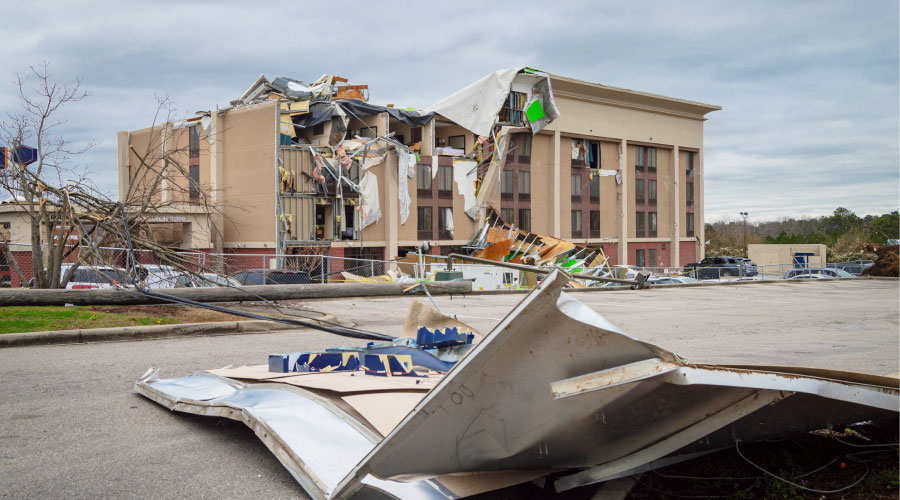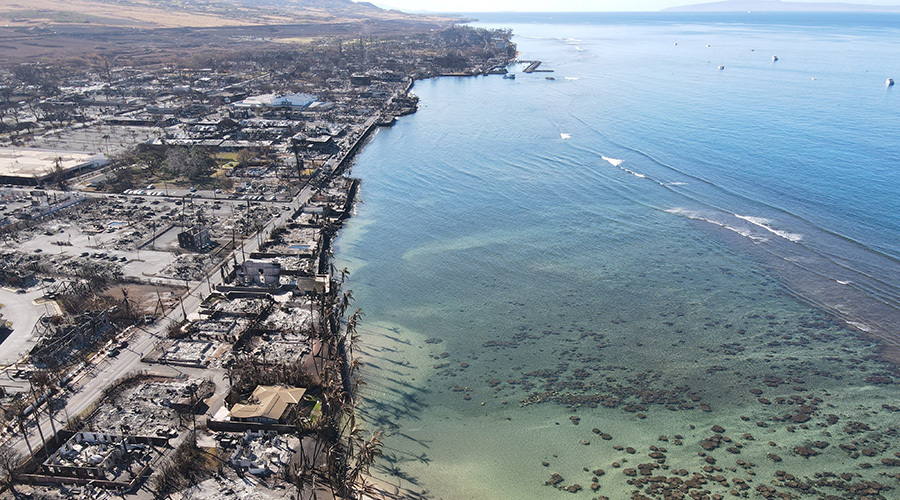The 4 Stages of Emergency Preparedness
Understand how best to plan and respond to an emergency with FEMA’s four-point guidelines.
By Greg Zimmerman, senior contributing editor
Every cliché has a kernel of truth, but the truth in this one is more like a bomb: Failing to prepare is preparing to fail. You’ve likely heard some measure of the litany of recent disasters. For instance, in 2022 there were 18 climate disasters totaling $175.2 billion and resulting in nearly 500 dead. Between January 2013 and January 2023, 88.5 percent of counties in the U.S. declared a natural disaster at least once. Are your facilities prepared? Or are you just going to risk it and hope you’re in that 11.5 percent that have gotten incredibly lucky so far?
Emergency preparedness has become a core competency of every facility manager these days. And like sustainability, it’s a core competency that touches just about every aspect of facility operations. With every action taken, every new piece of equipment purchased, and process or policy implemented, facility managers should consider how it improves a facility’s ability to withstand and recover from a disaster.
The Federal Emergency Management Agency has designated four stages of emergency management and offers guidance and tips on how facility managers should use each phase as a framework for building emergency preparedness. The four phases are: Mitigation, Preparedness, Response, and Recovery. Here is a little more information about how facility managers can use this framework and tailor their own building plans and strategies.
Mitigation – Understanding all you can do to mitigate the possible effects of a disaster is largely about creating physical improvements to buildings to help them better withstand extreme weather. Mitigation begins with a risk assessment to understand what the most probable emergencies might be. And then using that information to apply it to each unique situation for your building. Are there trees near windows? Is your roof old and may peel back in a high wind event? Is critical equipment stored in places that could easily flood? This risk assessment must be a continuous process, not a one-time thing.
Then, literally from the roof to the basement, facility managers must take every step possible to strengthen their buildings to mitigate disaster. As one common example, Rockefeller University moved all its data center equipment in one of its tech buildings from the basement to the third floor. When Hurrican Sandy hit in 2013 and the storm surge flooded the basement of that building, this mitigation strategy saved the university untold millions in damage to expense equipment.
Facility managers are probably familiar with the buzzword of the day: Resilience. At the end of the day, mitigation is about making facilities more resilient in the face of a disaster or emergency. What that looks like depends on the nature and risk tolerance of each facility and each organization.
Preparedness – The most crucial step, arguably, of emergency preparedness is, well, being prepared. Preparedness has to do with the organization and planning for what to do if a disaster happens. This includes all the policies and procedures created so that ideally everyone in the facilities organization specifically but also the whole organization knows what to do in case of emergency. Another huge aspect of the preparedness step is training – making sure staff and occupants understand their roles and responsibility in the event of a disaster. Ensure that you have contracts in place with vendors – for fuel for generators, for example – so that if power is lost, you have a plan for ensuring at least critical systems can be powered for an extended period, if need be.
Preparedness is a continuous process, as well; a task never finished. Change is constant – both in terms of facility use, occupant make-up, staffing, and also risk and potential disasters a facility may have to endure. So facility managers must keep on top of preparedness plans and policies to ensure they are current, relevant, and effective.
Response – Despite best laid plans, best mitigation efforts, and best intentions, disasters are still going to occur. The third phase of emergency preparedness is to respond effectively to a disaster when it does happen.
The most crucial aspect of the response is making sure occupants of the building are safe and out of harm’s way. Facility managers also must quickly assess damage and other impacts to try to prevent secondary damage, and to ensure the health and safety of occupants in the short term.
For instance, if power is out, make sure backup systems are functioning and fully fueled and can supply power to critical systems. If a building’s water supply has been contaminated, make sure the water is shut off until further evaluation and testing can be completed. If parts of a building are damaged and unsafe, limit access to those areas until they can be reassessed and repaired. If parts of a building are damaged to the point that normal security measures like access control aren’t in place anymore, it might be necessary to post a security officer to protect against unauthorized access, looting, or further property damage.
Recovery – After a disaster, every person in the organization will be anxious to get things back to normal. But recovery to normal will probably not be as simple as flipping a switch. Depending on the nature and severity of the disaster, recovery will take time and dollars. In the short-term, recovery means simply getting the organization back on its feet in as little time as possible. For most businesses, time is money, so business continuity in the recovery phase is the highest priority. The recovery phase is also when it’s important to assess the first three phases of emergency preparedness to identify flaws in plans and determine if there are improvements that can be made to mitigate future disasters. That can help ensure a quicker recovery time when the next disaster strikes.
Greg Zimmerman is senior contributor editor for the facility group, which including FacilitiesNet.com and Building Operating Management magazine. He has more than 19 years’ experience writing about facility issues.
Related Topics:











